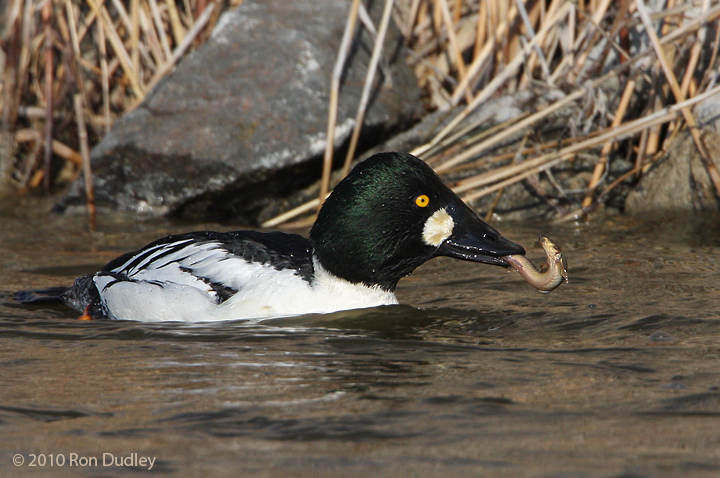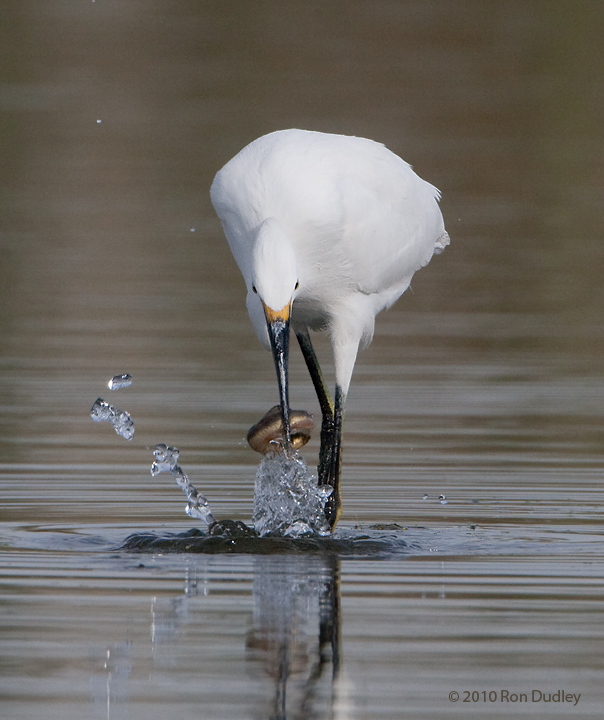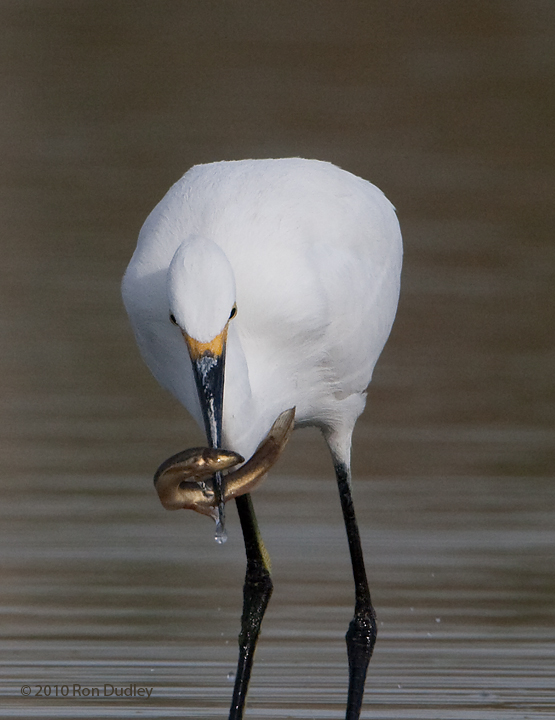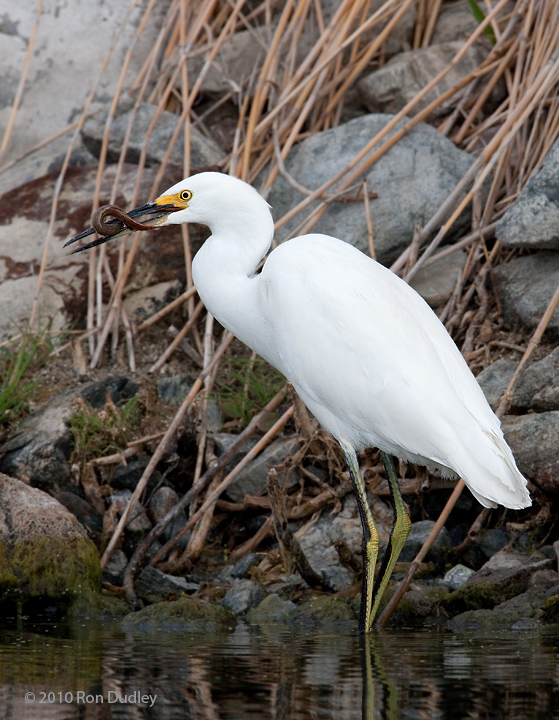On December 12, 2007 I photographed this Common Goldeneye with a fish at Farmington Bay Wildlife Management Area. At the time I didn’t pay much attention to what kind of fish it might be and then just kind of forgot about it.
Male Common Goldeneye with unidentified (at the time) fish
The moment of capture
Then, on October 2, 2008, I took some photos of a Snowy Egret fishing, also at Farmington. Finally, I became curious about the unusual fish – noticing the atypical elongated almost eel-like body in particular.
I made some casual inquiries of refuge personnel about fish species present there but didn’t get anything definitive that would match this fish. More time went by, then I finally showed Justina Parsons-Bernstein some of the photos and asked her about the fish. She is the Director of The Great Salt Lake Nature Center at Farmington Bay WMA and she was also curious as to what species of fish it was so she sent some of my images to a vertebrate specialist with the state of Utah. He keyed it out as a Weather Loach.
It turns out that the Weather Loach or Dojo Loach as it is also known (Misgurnus anguillicaudatus) is quite a remarkable fish. The name Weather Loach comes from the fact that it is highly sensitive to minor changes in barometric pressure and when it perceives such a change its behaviour becomes erratic, active and animated. Humans have kept them captive as a weather indicator for centuries.
They are a very hardy species, capable of surviving poor conditions by swallowing atmospheric air and forcing it through their digestive system where their intestine absorbs oxygen into their blood stream. Excess air is expelled through the anus. They can survive out of water for many hours.
Native mostly to Asia where it’s commonly eaten by humans, the Weather Loach is a popular aquarium species in much of the world – thus the problem. They prefer cold water but can tolerate wide temperature ranges so when aquarists dispose of their fish in fresh water streams, ponds and lakes they often survive and even thrive. In some parts of the world they have become a significant problem as an invasive species.
Likely what has happened here in Utah is that aquarists have disposed of their unwanted fish into the Jordan River which drains into the marshes of the Great Salt Lake, including Farmington.
Below are a couple of better looks at the loach.
Snowy Egret with Weather Loach
A closer look
I’ve been unable to find any online references that indicate that the Weather Loach as an invasive species is recognized by Utah authorities as a viable ecological threat. In fact I haven’t even found any mention of them surviving in the wild in Utah waters. One might suspect that the two fish caught by the egret and goldeneye could be isolated incidents. However, twenty minutes after this egret caught and ate the loach it did the same with a second loach, see photo below. That would indicate to me that there’s likely a thriving population of them in at least a few of the marshes of the Great Salt Lake.
Snowy Egret with second loach, 20 minutes later
Since the Weather Loach is considered to be enough of an ecological threat in some parts of the world (Queensland, Australia for example) that hefty fines are levied for the importation or possession of the species it might be interesting to see how this situation plays out in Utah.
Ron







Why are they a threat?
Great photographs. I have seen a Great Egret eating (probably) the same species in the small pond immediately south of the office and map/sign at Farmington Bay.
Thanks Ken. I suspect the loaches are now found throughout the waters of Farmington Bay WMA.
Those loaches are not an ecological problem as they blend in very well with their environment. They have been found in pacific-northwest waterways and no damage from their presence has been noticed, as has their presence in your area. They are a friendly, easily adapting and non-evasive species. Love them. <3
I hope you’re right Cynthia but history is rife with examples of invasive species whose negative effects on the environment weren’t known until much later down the road and by then it was too late to do anything about it.
Ron,
This is a very interesting and informative post about the Weather Loach. I wonder how the release of the Weather Loaches will impact freshwater ponds & lakes in Utah and beyond. Time will tell I am sure.